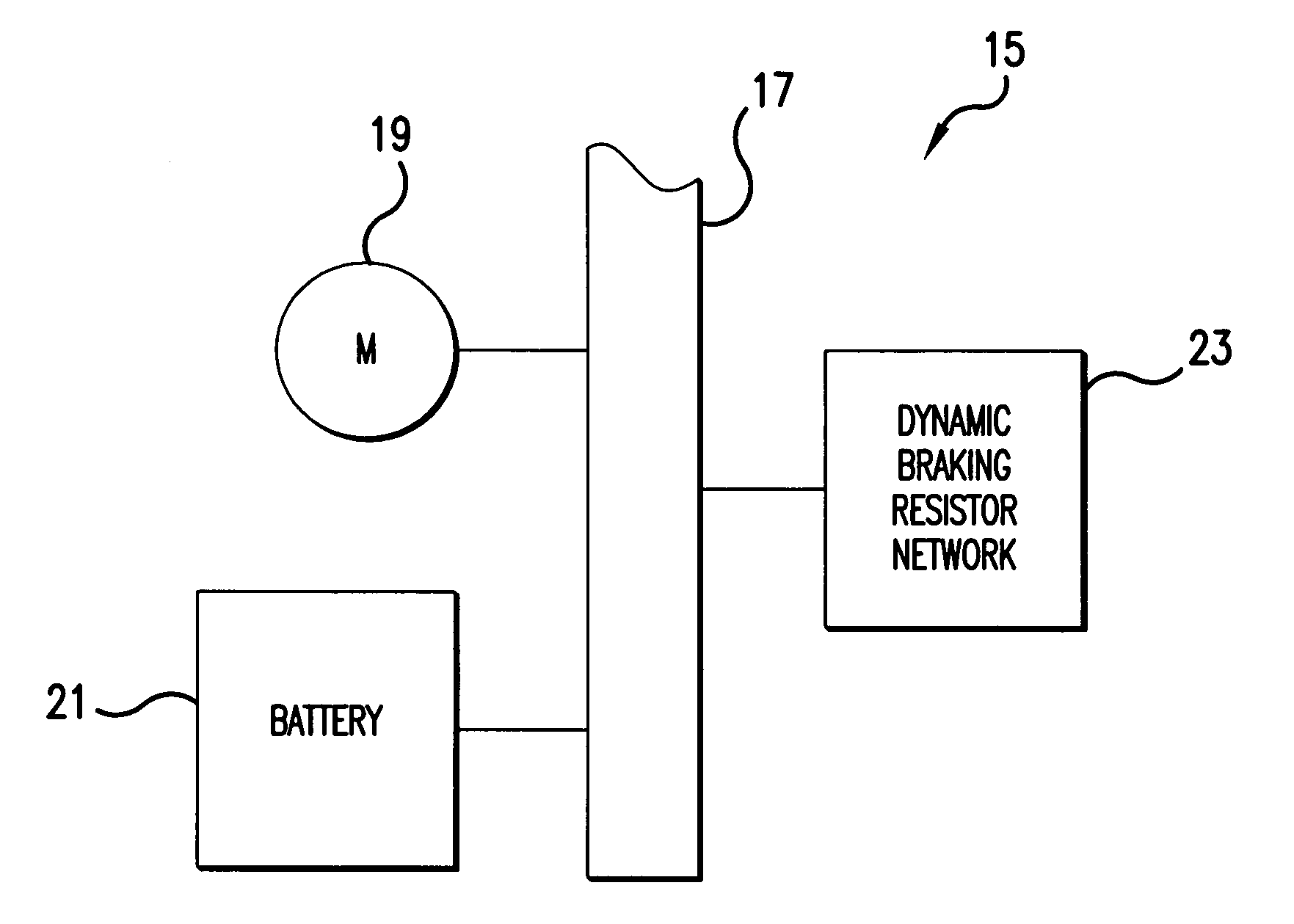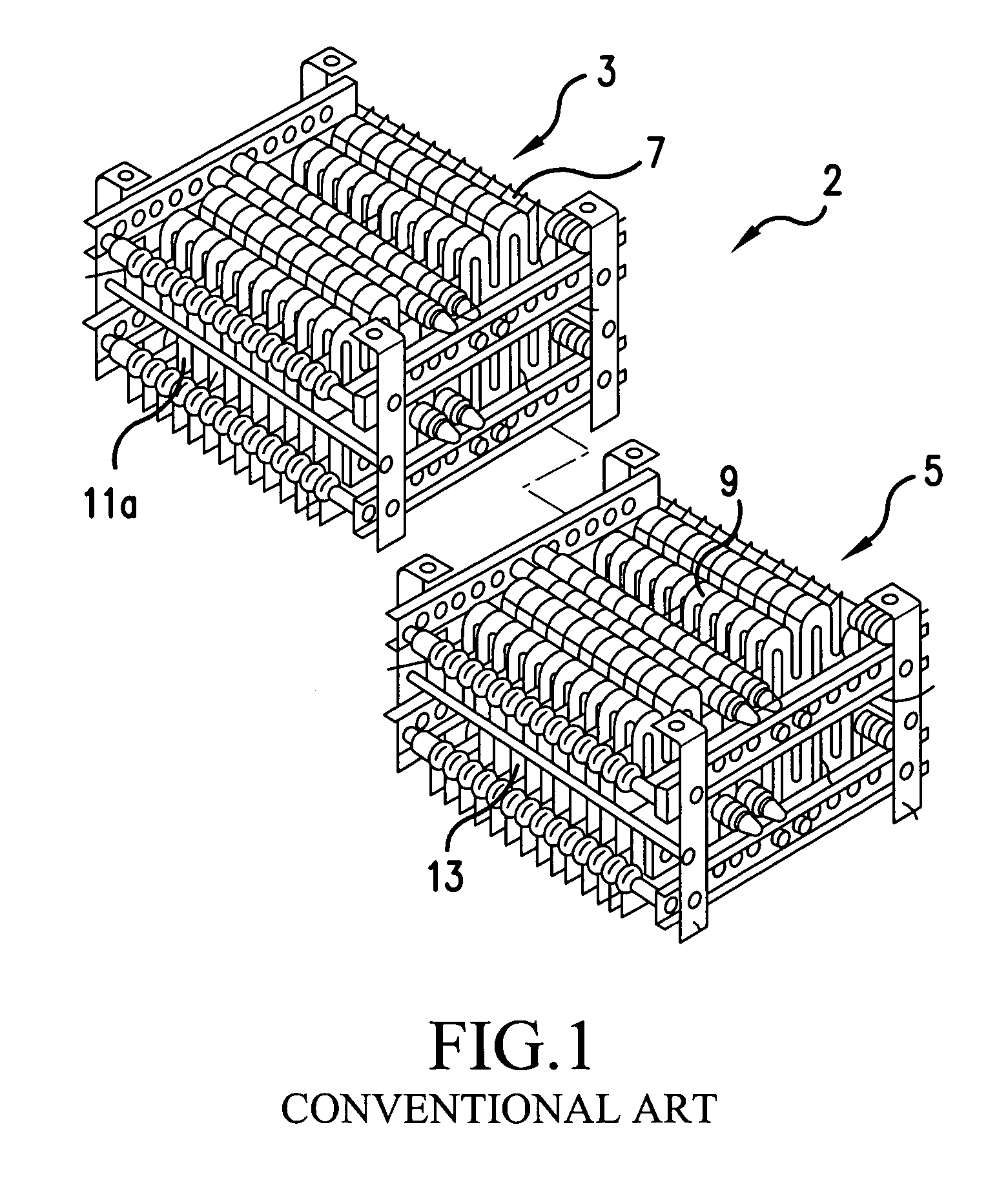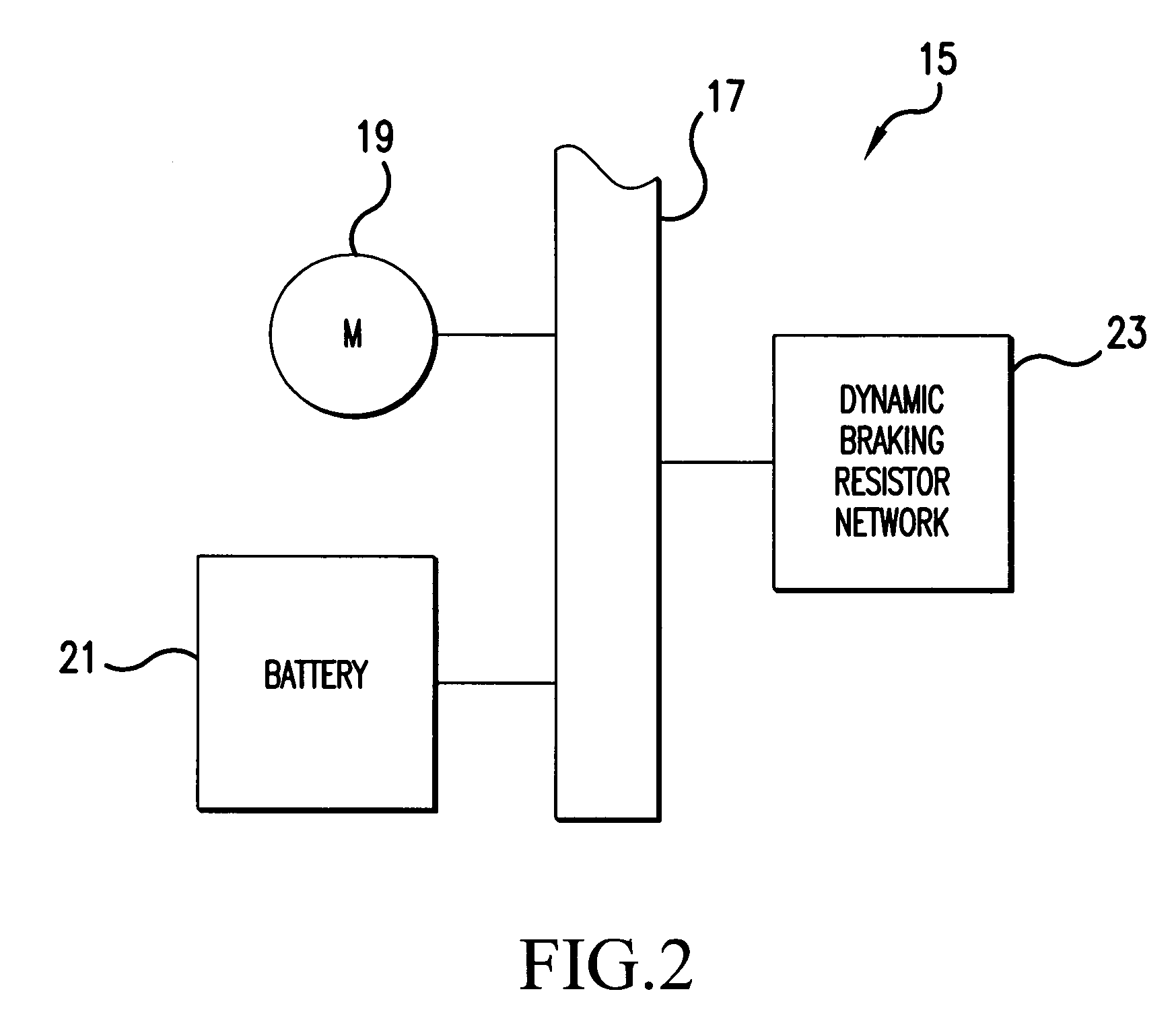Multi-stage dynamic braking resistor network
a dynamic braking resistor and multi-stage technology, applied in the direction of motor/generator/converter stopper, dynamo-electric converter control, instruments, etc., can solve the problems of increasing the load of the braking resistor on the system bus, damage to the system, and the inability to switch back into the conventional braking resistor, etc., to achieve the effect of dissipating excessive energy
- Summary
- Abstract
- Description
- Claims
- Application Information
AI Technical Summary
Benefits of technology
Problems solved by technology
Method used
Image
Examples
Embodiment Construction
[0024]FIG. 2 is a block diagram showing a portion of a FCAS system 15. Although only one FCAS system 15 is shown, several FCAS systems can be connected to one another in, for example, an airplane, which may have eight FCAS systems. The FCAS system 15, shown in FIG. 2 includes, for example, a system bus 17, one or more motors or actuators 19, a battery 21, and a dynamic braking resistor network 23. Although it is not shown in FIG. 2, the dynamic braking resistor network 23 can include one or more dynamic brake resistors 1, which is discussed further below.
[0025]The dynamic braking resistor network 23 must be able to deal with a worst-case scenario of an FCAS system 15. A worst-case scenario is, for example, a simultaneous regeneration of all FCAS systems on one system bus 17. In other words, the dynamic braking resistor network 23 dissipates this regenerative energy, which is produced by the motors or actuators 19, without disturbing the battery voltage and maintains the battery volt...
PUM
 Login to View More
Login to View More Abstract
Description
Claims
Application Information
 Login to View More
Login to View More - R&D
- Intellectual Property
- Life Sciences
- Materials
- Tech Scout
- Unparalleled Data Quality
- Higher Quality Content
- 60% Fewer Hallucinations
Browse by: Latest US Patents, China's latest patents, Technical Efficacy Thesaurus, Application Domain, Technology Topic, Popular Technical Reports.
© 2025 PatSnap. All rights reserved.Legal|Privacy policy|Modern Slavery Act Transparency Statement|Sitemap|About US| Contact US: help@patsnap.com



